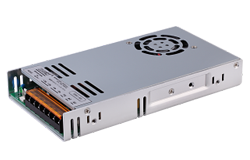news
Bidirectional DC DC Converter: Principles, Topologies, and Applications
Author: ZYG Power Module Time: 2023-6-24
A bidirectional DC-DC converter is a power electronic device that can transfer electrical energy bidirectionally between two DC voltage levels. It is widely used in various applications, including electric vehicles, renewable energy systems, and battery energy storage systems. This article will explore the principles, topologies, and applications of bidirectional DC-DC converters.
Principles of Bidirectional DC-DC Converter
The main function of a bidirectional DC-DC converter is to transfer power from one DC voltage level to another. The power transfer can be either unidirectional or bidirectional. A bidirectional converter can transfer energy from a high voltage source to a low voltage load and vice versa. Bidirectional DC-DC converters typically consist of two power converters, each with its own power switch and control circuit. One converter operates in the forward direction, transferring energy from the input voltage to the output voltage, while the other converter operates in the reverse direction, transferring energy from the output voltage to the input voltage.
The operation of a bidirectional converter is controlled by a feedback loop that adjusts the duty cycle of the power switches to maintain the desired output voltage level. The duty cycle determines the amount of time the power switch is on during each switching cycle. By adjusting the duty cycle, the output voltage can be regulated to a desired level.
Topologies of Bidirectional DC-DC Converter
There are several topologies of bidirectional DC-DC converters, including full-bridge, half-bridge, and interleaved. Each topology has its advantages and disadvantages, and the choice of topology depends on the specific application requirements.
The full-bridge bidirectional DC-DC converter is a popular topology used in high-power applications. It consists of four power switches arranged in a bridge configuration. In the forward direction, the input voltage is applied across the diagonal of the bridge, while the load is connected across the other diagonal. In the reverse direction, the input and output terminals are swapped, and the converter operates in the opposite direction.
The half-bridge bidirectional DC-DC converter is a simpler topology that uses two power switches. In the forward direction, the input voltage is applied across one switch, while the load is connected across the other switch. In the reverse direction, the input and output terminals are swapped, and the converter operates in the opposite direction.
The interleaved bidirectional DC-DC converter is a more complex topology that uses multiple power converters in parallel. This topology has the advantage of reducing the input and output current ripple and improving the overall efficiency.

Applications of Bidirectional DC-DC Converter
Bidirectional DC-DC converters are widely used in various applications, including electric vehicles, renewable energy systems, and battery energy storage systems. In electric vehicles, bidirectional converters are used to transfer energy between the battery pack and the vehicle\’s electrical system. The converter can charge the battery pack when the vehicle is braking or decelerating, and it can discharge the battery pack to power the vehicle\’s electrical system when accelerating.
In renewable energy systems, bidirectional converters are used to transfer energy between the DC voltage level of the renewable energy source, such as a solar panel or wind turbine, and the DC voltage level of the load or the battery storage system. The converter can also transfer energy from the battery storage system to the load when the renewable energy source is not available.
In battery energy storage systems, bidirectional converters are used to charge and discharge the battery pack. The converter can charge the battery pack when excess energy is available from the grid or a renewable energy source, and it can discharge the battery pack to supply power to the load when needed.
Conclusion
In summary, bidirectional DC-DC converters are important power electronic devices that can transfer energy bidirectionally between two DC voltage levels. They are widely used in various applications, including electric vehicles, renewable energy systems, and battery energy storage systems. The choice of topology depends on the specific application requirements, and the operation of the converter is controlled by a feedback loop that adjusts the duty cycle of the power switches to maintain the desired output voltage level.
Precedente: ZP Series AC DC Converter – Efficient Power Conversion Solutions
Prossimo: Medical Power Series: Empowering Healthcare Professionals and Patients for Better Health
informazioni rilevanti
-
2023-6-18
Custom Type Power Series: The Ultimate Guide to Creating Unique and Effective Typography
Typography is a crucial aspect of graphic design. It's the art and technique of arranging type to make written language legible, readable, and appealing when displayed. Custom typography takes it a step further by creating unique and personalized typefaces that reflect the brand 's personality. In this guide, we'll explore the basics of typography, the benefits of custom typography, and the steps to create your own custom typeface. Typography Basics Typography has its own language with terms like serif, sans-serif, kerning, tracking, and leading. Let's break them down: - Serif: A small line or stroke attached to the end of a letter or symbol. - Sans-serif: A typeface that does not have serifs. - Kerning: The process of adjusting the...
Visualizza dettagli -
2023-5-24
High-Efficiency Industrial AC-DC Converter for Reliable Power Conversion
Abstract: This paper presents the design and implementation of a high-efficiency industrial AC-DC converter for reliable power conversion. The proposed converter is based on a two-stage structure that includes a power factor correction (PFC) stage and a DC-DC stage. The PFC stage is implemented using a boost converter, while the DC-DC stage is implemented using a full-bridge converter. The proposed converter is capable of operating in a wide input voltage range and provides a regulated DC output voltage. Simulation and experimental results show that the proposed converter achieves high efficiency and meets the requirements of industrial applications. Introduction: In industrial applications, reliable power conversion is essential to ensure the stable operation of various equipment and systems. AC-DC converters are widely...
Visualizza dettagli -
2023-6-18
DPX Series DC-DC Converter: Efficient and Reliable Power Conversion Solution
The DPX Series DC-DC Converter is an innovative power conversion solution that combines efficiency and reliability. This converter is designed to provide a stable and regulated output voltage, making it ideal for use in a variety of applications, including telecommunications, industrial automation, and renewable energy systems. Efficiency is a key feature of the DPX Series DC-DC Converter. With its state-of-the-art design and advanced control algorithms, this converter can achieve conversion efficiencies of up to 98%. This means that the converter wastes very little energy, resulting in lower operating costs and reduced environmental impact. Another important feature of the DPX Series DC-DC Converter is its high reliability. This converter is designed to operate in harsh environments, with a wide operating temperature...
Visualizza dettagli -
2023-7-5
Introducing the DM Series DC DC Power Supply: Unleashing Efficient and Reliable Power Solutions
In today's fast-paced and technology-driven world, the demand for efficient and reliable power solutions has never been more critical. From telecommunications to renewable energy systems, industries rely heavily on power supplies that can deliver uninterrupted and optimal performance. That's where the DM Series DC DC Power Supply comes into play, offering cutting-edge technology and unmatched reliability. The DM Series DC DC Power Supply is designed to meet the stringent power requirements of various applications, making it the go-to choice for professionals seeking high-quality power solutions. With its superior efficiency and reliability, this power supply ensures uninterrupted operations and enhances the performance of critical systems. One of the standout features of the DM Series is its high conversion efficiency. By employing...
Visualizza dettagli -
2023-7-17
Why Choose AC DC Power Supply SF Series
The AC DC Power Supply SF Series is a cutting-edge technology that offers efficient and reliable power solutions for various industrial applications. With its advanced features and high performance, this power supply series has become a popular choice among professionals in the field. One of the key highlights of the AC DC Power Supply SF Series is its versatility. It can seamlessly switch between AC and DC power sources, providing flexibility and convenience for users. This means that it can be used in a wide range of applications, from telecommunications and data centers to industrial automation and renewable energy systems. Another notable feature of the SF Series is its high efficiency. It is designed to deliver maximum power output while...
Visualizza dettagli -
2023-10-20
Introduction to DC-DC Power Supply Modules: Advancements in Power Distribution Technology
Power supply modules play a crucial role in various electronic devices and systems by converting one form of electrical energy into another. Among the different types of power supply modules, the DC-DC power supply module is a notable advancement in power distribution technology. This article aims to provide an overview of DC-DC power supply modules, discussing their working principles, advantages, applications, and recent advancements. Working Principles of DC-DC Power Supply Modules DC-DC power supply modules are designed to convert a direct current (DC) voltage from one level to another. This conversion is achieved by using switching techniques, such as pulse width modulation (PWM) or pulse frequency modulation (PFM), along with various topologies, including buck, boost, buck-boost, and isolated modules. These...
Visualizza dettagli


















